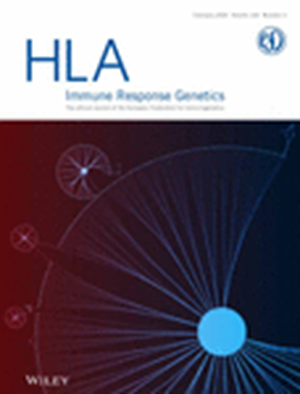Frequency and Distribution of KIR Genotypes of Donors-Recipient Pairs in the Haploidentical Haematopoietic Stem Cell Transplantation Setting: Collaborative Study by the Spanish Working Group in Histocompatibility and Transplant Immunology (GETHIT) and the Spanish Haematopoietic Transplantation and Cell Therapy Group (GETH-TC)
Abstract
There is limited information regarding the influence of KIR genotype, compared to the HLA system, in haploidentical haematopoietic stem cell transplantation (haplo-HSCT). This study aimed to determine the frequencies of KIR genotypes in Spanish haematologic patients undergoing haplo-HSCT. A study was conducted on 113 oncohaematological patients and their donors, treated across five centres that are members of the Spanish Working Group in Histocompatibility and Transplant Immunology (GETHIT) and the Spanish Haematopoietic Transplantation and Cell Therapy Group (GETH-TC). KIR typing was performed using PCR-rSSO or PCR-SSP. KIR genotypes were identified using the KIR Allele Frequency Net Database. Among donors, the most frequent KIR genotypes were Type 1 (28.3%), Type 2 (12.4%) and Type 4 (10.6%). In patients, Genotypes 1 (23.9%), 4 (23%) and 2 (14.2%) were most prevalent. Donors exhibited AA centromeric (46%) and telomeric (59.3%) types, while patients had a higher AB centromeric frequency (52.2%). Differences were observed in the BB centromeric type (3.5% patients; 16.8% donors, p = 0.002). The AB KIR genotype was the most common (70.8% donors; 75.2% patients). Most were classified as ‘neutral’ (61.9% donors; 73.5% patients). B-content score1 was the most common (48.7% patients; 33.6% donors). Notably, classification as best was rare (2.7% patients; 16.8% donors, p = 0.002). The study highlights the distribution of KIR genotypes in haplo-HSCT patients and donors, with Genotypes 1, 2 and 4 being the most prevalent. AB KIR genotypes and B-content score 1 were dominant. Moreover, KIR genotypes ID may serve as criteria for future investigation about the immunogenetic predisposition to malignant haematological diseases.

 求助内容:
求助内容: 应助结果提醒方式:
应助结果提醒方式:


